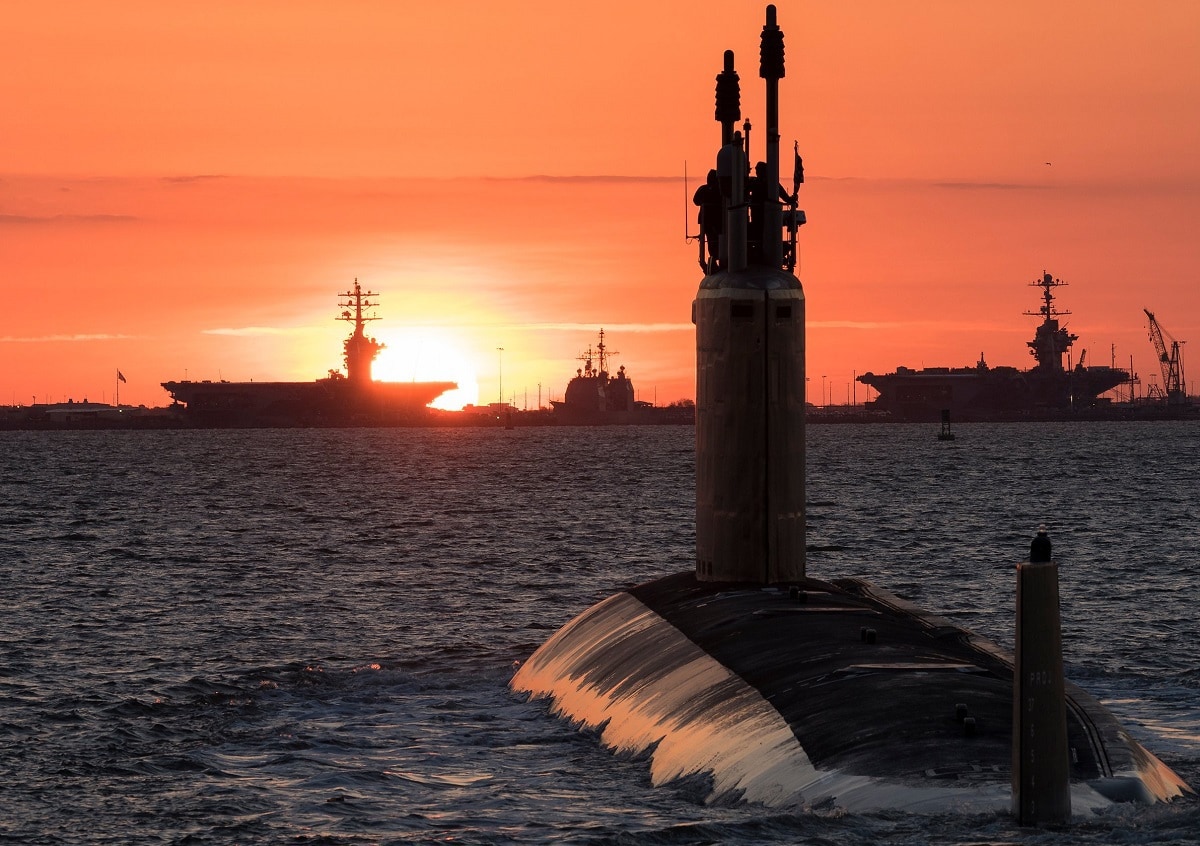While designed in the 1980s, some would say the Seawolf-class of submarines are the best subs to ever sail and maybe better than what is currently coming out of shipyards today: The U.S. Navy had builders cram all kinds of goodies into the Seawolf submarine. It brims with numerous advanced munitions, it’s quiet, and it has thicker hulls to withstand the pressure of deep diving. The fast, nuclear-driven attack sub is truly a marvel meant to challenge the Soviet Union and later the Russians in undersea warfare. But high costs got in the way and only three were built. The Seawolf is still one to watch even though the program was cut due to the break-up of the Soviet Union – the sub’s original main enemy. Let’s take another look at this submarine that is still an ace that can be played by the Navy.
The Soviets Were Ahead of the Sub Game Toward the End of the Cold War
In the mid-1980s the Soviets had attack submarines that started to rival the nuclear-powered Los Angeles-class of fast-attack boats. The Soviets had the vaunted Akula-class that was deadly silent and could slip down to a depth of 2,000-feet.
The Reagan White House Was Gung-ho
So, in 1983, stoked by President Reagan’s plan to beef up the U.S. military, the navy wanted a sub that could answer these shortcomings. Moreover, sometimes art inspires defense policy. The Hunt for Red October was published in 1984. Tom Clancy’s first novel struck a nerve among the public, what if a Soviet super-sub was lurking in the waters to endanger the east coast of the United States? Reagan said he read the book and as a result, his Department of Defense likely got an earful from the White House about new U.S. submarine development.
Seawolf-class Wows the Navy
The USS Seawolf was the result. In 1989, the new submarine began its journey to production in a contract award to Electric Boat. By its commissioning in 1997, it displaced 9,000 tons and was almost as long as three football fields. The navy wanted to buy 29 subs. The branch reduced it to 12 to cut costs and only three were made. The big reason for the reduction in the ambition of the program was the sticker shock – $3 to $3.5 billion per sub.
Speedy and Heavily Armed
But what a boat. The speed jumps out first – 35-knots submerged and 20-knots in silent mode. The armaments were equally impressive. The Los Angeles-class deployed with 37-torpedoes in four tubes, but the Seawolf-class had 50 heavy-weight 533-millimeter Mark 48 torpedoes. Don’t forget a load of Harpoon anti-ship missiles, which it could launch through eight tubes. The Seawolf could also fire land-attack Tomahawk missiles.
Deeper Diving and Quiet
Higher-strength steel (an estimated 20-percent stronger than the L.A.-class) allowed for deeper dives up to 2,000 feet. And it is quite – as Kyle Mizokami wrote, “Ten times quieter over the full range of operating speeds than the improved Los Angeles submarines, and an astonishing seventy times quieter than the original Los Angeles–class submarines. It can run quietly at twice the speed of previous boats.” It also came equipped with a better sonar system.
Was It Still Needed?
But the Seawolf-class was the victim of the post-Cold War “peace dividend.” This was the belief by the Clinton administration and many in Congress in the 1990s that high-priced weapons programs were not necessary after the Soviet threat was eliminated – and that cost savings from defense budget cuts could be spent elsewhere. The three remaining Seawolf boats were ahead of their time and positively influenced the advent of the Virginia-class fast-attack boats – subs that will remain in service for decades.
Now serving as 1945’s Defense and National Security Editor, Brent M. Eastwood, Ph.D., is the author of Humans, Machines, and Data: Future Trends in Warfare. He is an Emerging Threats expert and former U.S. Army Infantry officer. You can follow him on Twitter @BMEastwood.

